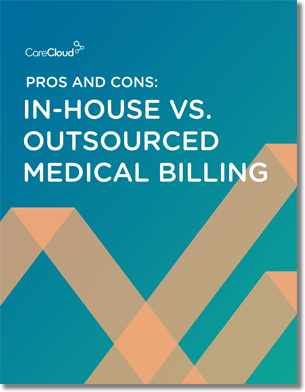If you run a medical practice, supervise billing staff or even wrangle with the multitudes of rules and regulations yourself, you know medical billing is complicated. The administrative burden of running a financially sound medical group is consuming more and more valuable time for physicians, practice administrators and CFOs.
The switch to ICD-10 codes is only making things more complex. If you’re like most providers, you’re now spending more time searching for the most precise diagnostic codes for the patient in front of you. This complexity transfers over to getting paid for your services, which could be one of the reasons more physicians are turning to medical billing companies for help.
It’s clear we’re in the midst of some major changes. But what lies on the horizon for health IT and medical billing?
Widespread EHR Adoption
Back in 2011, the National Center for Health Statistics reported that 55% of physicians had adopted an electronic health record system. Fast forward and 83% have an EHR, an ONC Data Brief on Physician EHR Adoption through 2014 reveals.
The adoption of information technology in healthcare reflects a global, cross-industry upheaval of the status quo. Many U.S. providers adopted electronic health records in the past few years, driven by frustration with outdated technology and financial incentives from CMS’s Meaningful Use incentive programs.
How well the healthcare world becomes more connected and paperless, however, depends on interoperability. The goal is for different clinical, operational and financial software systems to communicate seamlessly within and between medical groups. Interoperability should usher in greater efficiency that will simplify and speed up the payment cycle for providers, medical billers and payers.
Interoperability predictions for the next 3, 6 and 10 years appear on the Interoperability Roadmap infographic from the Office of the National Coordinator for Health Information Technology (ONC). It’s about more than patient safety and provider convenience — interoperability will increase the speed and accuracy of the information for public health and clinical research projects. Some of the public comments posted about interoperability are also worth a read.
Evolution of Coding
While the change to ICD-10 has spurred conversation about its administrative and cost-related burdens, experts say its extra level of detail will help streamline the claims submission process.
ICD-9 codes were not developed with reimbursement in mind in 1977. That came later. In contrast, ICD-10’s greater specificity will give payers, policy makers and providers better information, leading to more precise (and in some cases, higher) reimbursement.
Furthermore, fewer gray areas in coding will make it easier to compare codes with clinical documentation, check for consistency between diagnosis and procedure codes, and make it more challenging for dishonest providers to hide behind unclear code rules.
However, coding specialists fear coding software integrated into EHRs or practice management systems may replace their jobs within the next ten years. So what’s the job outlook like for medical billing and coding professionals over the next decade?
Will There Be Jobs?
We believe the outlook is bright for billers and coders. ICD-10 means more accurate medical billing and coding, which could translate to more jobs and higher medical billing salaries.
Skilled medical coders are already in high demand, especially those who can successfully navigate ICD-10 and solve issues as they arise.
The figures back the rosy employment outlook. For example, the US Bureau of Labor Statistics predicts employment of billing and posting clerks will grow 18 percent in the decade leading up to 2022. “Job growth will be particularly strong for those in medical billing because increased demand for healthcare services will require more of these workers.”
In related occupations, the Bureau predicts employment of health information technicians will grow, even more, 22 percent, and much faster than average for all occupations. The aging of the overall population is driving up demand in this area. At the same time, employment for medical transcriptionists will grow by only 8 percent, with their duties offset in part by advances in technology.
Overall, medical billers and coders still have a future in continuing to help the U.S. healthcare system save money, improve patient care and lead the world inefficiency.
Ahmed Mouri contributed to this post.
How positive do you feel about the future of medical billing salaries and job growth?
The material and information contained on this website is for general information purposes only. You should not solely rely upon the material or information on the website as a basis for making any business, legal, medical, or any other decisions. While we endeavor to keep all information up-to-date and correct, all information in this site is provided "as is," and CareCloud Corporation and MTBC Inc. make no representations or warranties of any kind, express or implied, about the completeness, accuracy, reliability, suitability, or availability with respect to the information contained on the website for any purpose. Any reliance you place on such material is therefore strictly at your own risk.



